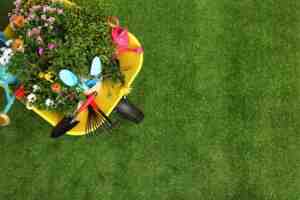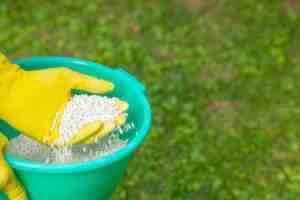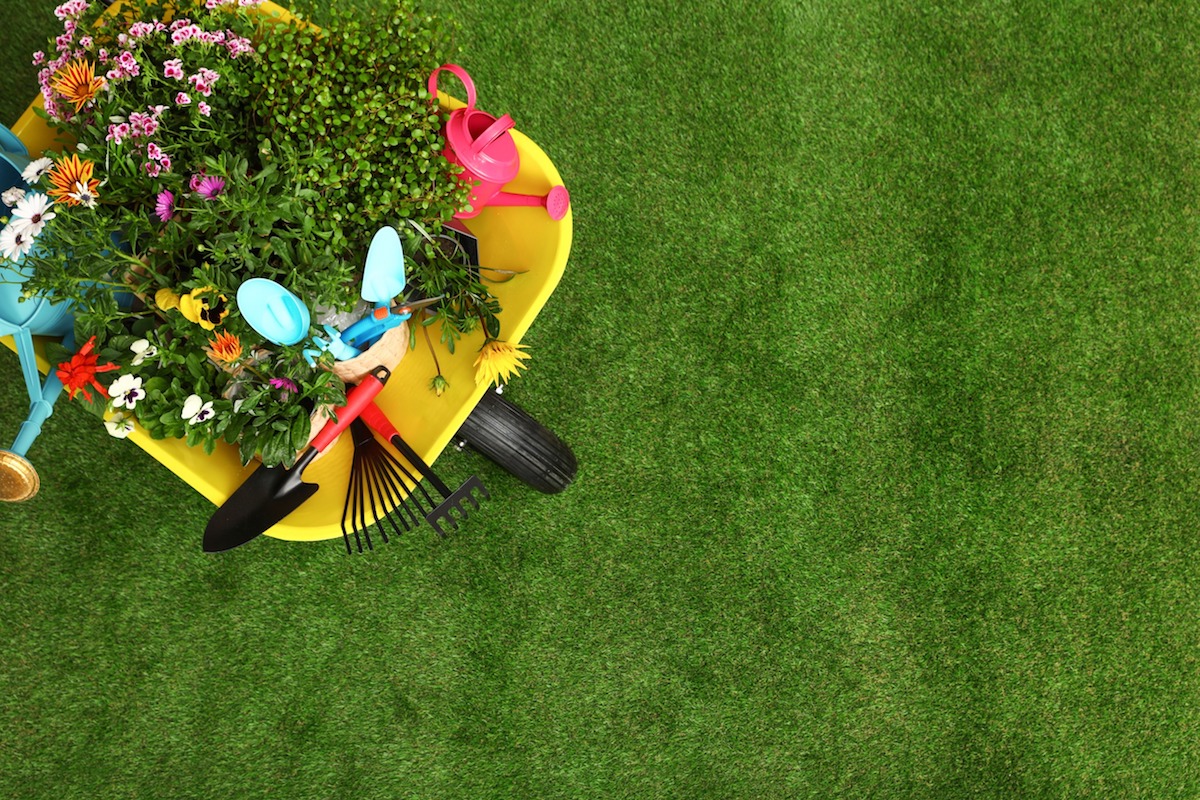Green and Clean: 9 Natural Solutions for Lawn and Garden Pests
Every homeowner dreams of a luscious lawn and garden. Aside from the aesthetic appeal, a healthy green space can enhance the air quality and provide an excellent stress reliever. Depending on the size of your garden, keeping it both eye-pleasing and pest-free may take some effort.
Home lawns and gardens are prone to pests and bugs regardless of the type of plants you grow. Fortunately, non-toxic methods have been created to help protect your outdoor oasis from harmful pests without dangerous side effects.
Before detailing the extermination methods of these garden pests, it’s essential to know what they are and the damage they can cause.

What are Common Pests and How Do They Affect Your Lawn or Garden?
Aphids – These common garden pests extract nutrient-rich liquids from plants, stunting their growth, distorting flowers and fruits and turning leaves yellow.
Caterpillars – Armyworms, cutworms, and tent caterpillars cause damage to plants by excessively chewing on fruits, flowers, shoots, and leaves. Note that it can be tough to detect caterpillar infestation until extensive damage has taken place.
Grubs – Grubs are the larvae of scarab beetles, such as Japanese beetles and June bugs. A large population of grubs can ravage vegetable gardens, flower beds, or natural grass lawns. They tend to feed on the foliage and populate over the summer, creating a destructive cycle.
Slugs and Snails – Most active during damp weather, numerous slugs and snails can threaten your lawn or garden as they devour seedlings and young plants.
Biopesticides can be favorable alternatives to chemical pesticides as they do not have residual environmental effects. Experts have concluded that this should be explored for maximum use in agriculture.
The Best Natural Solutions for Lawn and Garden Pests
Companion Planting
Companion planting means putting two or more different plants together for the mutual benefits they provide for each other. This fosters a healthy ecosystem, keeping important insects in your garden while keeping pests at bay.
Although determining the best plants to pair is a bit of trial and error, picking the right combination can enhance the nutrients in the soil, assist in pollination, and significantly improve pest control.
Directions: Do your initial research first on which plants complement each other best. For example, if you have vegetables, it’s best to plant marigolds beside them to deter pests from destroying your crops.
Neem Oil
Neem oil is a popular natural pest repellent extracted from neem trees (Azadirachta indica). It contains the powerful compounds Azadirachtin, Nimbin, and Salanin, which have insecticidal, antifungal, and antibacterial properties.
Azadirachtin, an active compound found in Neem oil, is often used as a “growth regulator” in some natural pesticides. This compound can disrupt insect-growing phases, leading to the death of most lawn pests. It can also stop common pests from reproducing and returning to your garden.
Directions: Spray the diluted neem oil to the undersides of leaves and areas where pests are commonly found.
Ensure thorough coverage of the plants, but avoid excessive dripping or runoff. It’s best to do this during the early morning or late evening when the temperature is lower.
Organic Fertilizers
Organic fertilizers not only help in promoting plant health, but they also play a role in reducing lawn or garden pests.
Organic fertilizers enable plants to develop strong defenses against common lawn and garden pests by providing all the essential nutrients in a slow-release and balanced way. They also improve soil health and microbial activity, improving the soil ecosystem.
There are many types of organic fertilizers. Do your research and find which one is the best to use for your lawn or garden.
Directions: Apply the fertilizer around the plant base and water it well. Use it constantly to promote healthy plant growth and resist pest attacks. However, you should also avoid over-fertilizing your lawn or garden.
Combining this method with other organic pest control solutions is best to achieve great results.

Basil Spray
Basil is a natural herb that can keep pesky bugs away with its fumes. It has essential oils like linalool and eugenol and its intense aroma acts as a natural deterrent for pests.
Planting or spraying basil creates a natural barrier against insects such as mosquitoes, flies, and some types of beetles.
Directions: Blend fresh basil leaves with water to create a basil-infused liquid, then strain it and transfer it to a spray bottle. Spray the solution on your plants to deter pests and reapply as needed.
Bacillus Thuringiensis
Bacillus thuringiensis (Bt) is a soil-dwelling bacteria used as an organic pesticide mainly against caterpillars.
Bt produces proteins called crystal toxins, which are toxic to caterpillars and impair their gut function. When ingested, the toxins damage the gut lining of the insect larvae, causing them to succumb to infection and starvation.
Directions: Most Bt products are in spray bottles. Simply spray it on the top and bottom of the leaves. Caterpillars munch on leaves, so the action will prevent them from further damaging your plants.
Onion
Since onions are a kitchen staple and release an intense aroma, they make great natural home and garden pest repellents.
Common garden pests such as aphids, slugs and snails, and carrot flies are all repelled by the strong scent of onions, protecting your plants without damaging risks.
Directions: To create the onion mix, chop the onions into smaller pieces and blend them with water in a blender or food processor. Once it forms a smooth mixture, strain it to remove any solid pieces, then transfer the liquid to a spray bottle.
Apply the onion spray directly onto the plants to repel the pests. Reapply the mixture every few days to ensure its effectiveness. It’s excellent for keeping mites and aphids away from your lawn.
Garlic Oil Spray
Like onions, garlic oil spray emits a pungent odor, making it another good garden pest repellent. This natural solution can disrupt the feeding of aphids, whiteflies, and spider mites that rely on their sense of smell to locate host plants.
Directions: Mince three to four cloves of garlic. Then mix it with two teaspoons of mineral oil. After leaving the mixture overnight, separate the garlic from the oil by straining it.
After that, add the mixture to 473 milliliters of water. Include one teaspoon of decomposable dish soap. Once the mixture is ready, test it by spraying it in a small portion of your garden.
If there are no adverse effects, you may spray it regularly and evenly on both sides of the leaves, stems, and other vulnerable areas.
Balsamic vinegar
Balsamic vinegar creates an inhospitable environment for pests like slugs and snails due to its odor and acidic nature. Balsamic vinegar is a great non-toxic solution against snail infestation as it is safe for humans and pets and will not negatively affect your plants.
It’s best to use aged balsamic vinegar as an organic herbicide. Additionally, the acetic acid in this vinegar also kills off weeds.
Directions: To create a balsamic vinegar spray, mix one part balsamic vinegar with three parts water. Transfer it to a spray bottle and shake well to combine.
When spraying, disperse it directly on the leaves and stems of the plants. Avoid hitting the soil as it may affect its pH level.
Spinosad
Spinosad is created by a soil bacterium called Saccharopolyspora spinosa. It’s a natural insecticide that is toxic to a large variety of garden pests.
Once garden pests ingest spinosad, it can disrupt their nervous system, leading to paralysis and death. Spinosad is most effective against pests such as caterpillars, beetles, thrips, and fruit flies.
Directions: Spinosad is commonly available in liquid concentrate or ready-to-use sprays. Dilute the spinosad solution with water and then transfer it to a spray bottle or garden sprayer.
Directly spray it on the upper and lower surfaces of the leaves of the infected plants for maximum effectivity.
Conclusion
Natural pest control methods are practical alternatives to synthetic pesticides because they get the job done without harming non-target organisms. This helps maintain ecological balance and promotes biodiversity in your lawn and garden.
Additionally, these organic pest control methods are safe for humans and pets and have minimal to no negative environmental impact. Regular use accompanied by a professional pest control program will surely keep your garden, lawn, and property safe from harmful pests.

